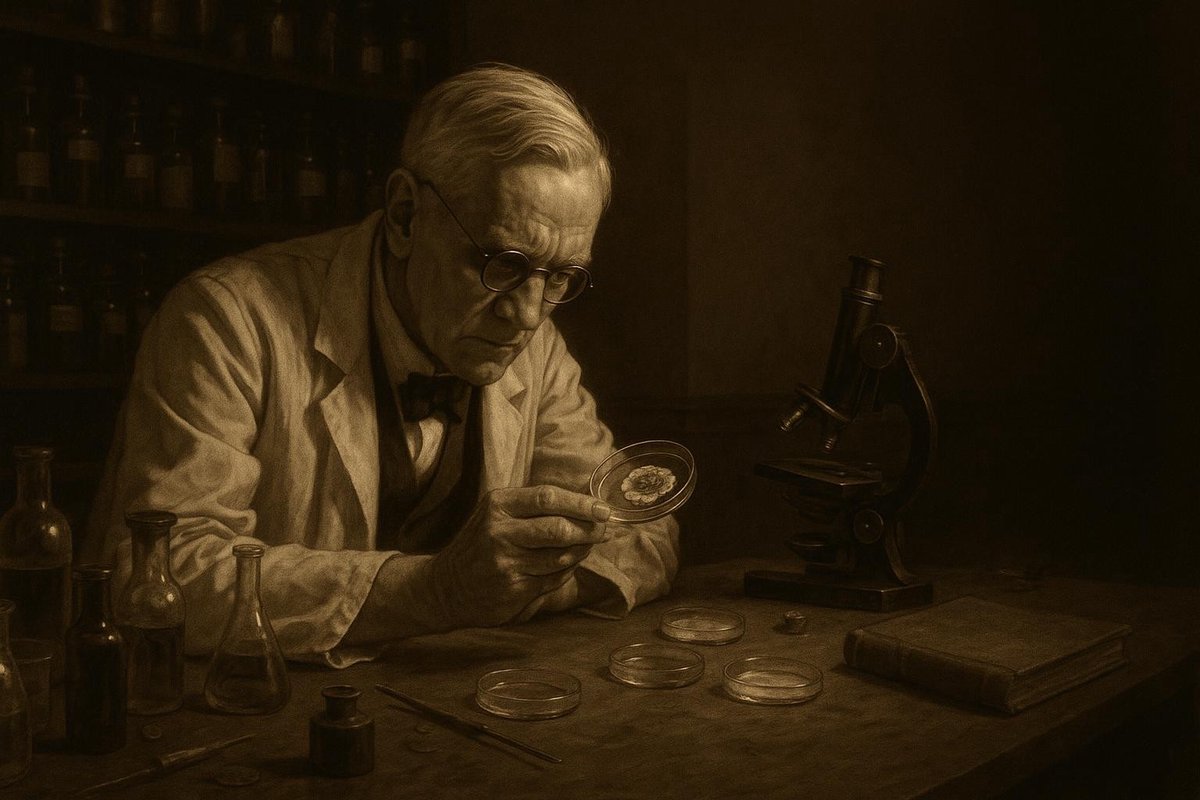
Origin: A Surprising Start in a London Lab
In September of 1928, Alexander Fleming, a bacteriologist at St. Mary’s Hospital in London, returned from a vacation to a messy lab. Little did he know that his untidiness would lead to one of the most significant medical discoveries of the 20th century. As he sorted through cluttered petri dishes, he noticed something unusual: a dish containing Staphylococcus bacteria had been contaminated with a mold, yet the area surrounding the mold was clear of bacteria.
- Fleming observed a ‘halo’ around the mold where bacteria had not grown.
- This mold, later identified as Penicillium notatum, was killing the bacteria.
- This observation was the serendipitous beginning of antibiotics.
Interestingly, prior to this, the medical community was desperate for treatments to combat bacterial infections. Common ailments often turned deadly due to lack of effective medicine. Fleming’s accidental discovery offered a glimpse into the future of medicine, sparking a chain reaction that would eventually save millions of lives.
Key Figures: The Team Behind the Mold
Although Fleming is widely credited for the discovery, it was a team effort that brought penicillin to the forefront of medicine. Howard Florey, Ernst Boris Chain, and Norman Heatley at Oxford University played crucial roles in developing penicillin into a usable drug during the early 1940s.
- Florey and Chain worked on isolating and purifying the active substance.
- Heatley devised innovative techniques to mass-produce penicillin.
- Their collaboration exemplified the power of teamwork in science.
Of course, the historical context here is vital. The world was at war, and the need for effective treatments for injured soldiers was urgent. This urgency accelerated research and funding, helping to transform Fleming’s forgotten mold into a life-saving medication. Many people believe that without this collaborative effort, penicillin might have remained an intriguing laboratory observation.
Turning Point: From Labs to Hospitals
The real turning point came during World War II. The Allied forces needed an effective treatment for wound infections. Penicillin, with its bactericidal properties, became the beacon of hope. Florey’s team conducted the first human trials in 1941, with dramatic results: patients with severe infections recovered rapidly.
- Penicillin’s effectiveness was demonstrated in both civilian and military hospitals.
- Mass production was initiated in the United States, with significant support from the government.
- The success of penicillin marked a new era in medical treatment.
As time goes on, it’s clear that the urgency of war and the collaborative efforts of scientists and governments around the world played a crucial role. The transition from a mysterious mold to a mass-produced antibiotic was nothing short of revolutionary. No wonder it earned the nickname ‘the wonder drug.’
Impact on the World: A New Era of Medicine
The discovery and development of penicillin marked the dawn of the antibiotic era, changing the face of medicine forever. Infectious diseases that once claimed countless lives became manageable, leading to dramatic improvements in public health.
- Penicillin paved the way for the development of other antibiotics, broadening treatment options.
- Mortality rates from bacterial infections plummeted worldwide.
- Medical practices evolved, with antibiotics becoming a staple in modern medicine.
In the years following its discovery, the global population witnessed increased life expectancy and improved quality of life. The social and cultural shifts were profound, as medical science could now tackle previously untreatable infections. Many people believe that penicillin not only saved lives but also changed how we perceive and combat illness.
The legacy of penicillin endures. Even today, it serves as a reminder of the impact one accidental discovery can have on the world. Its story is a testament to the unending possibilities of scientific exploration and collaboration.
Fuel Someone Else’s Curiosity
Inspired by this tale of accidental genius? Share this story with friends, family, or anyone curious about how science can change the world. Who knows, you might just spark the next conversation that leads to a groundbreaking discovery. After all, science thrives on curiosity and the sharing of ideas.

Leave a Reply